#earlyprint
Photo

You know when you are roughing in a database entry for a 1592 imprint in Latin and discover a 42 page Mss section bound in at the rear. It’s that sort of day. #rarebooks #earlyprinting #rarebookcataloging https://www.instagram.com/p/CmaHWb8Mk2n/?igshid=NGJjMDIxMWI=
0 notes
Photo
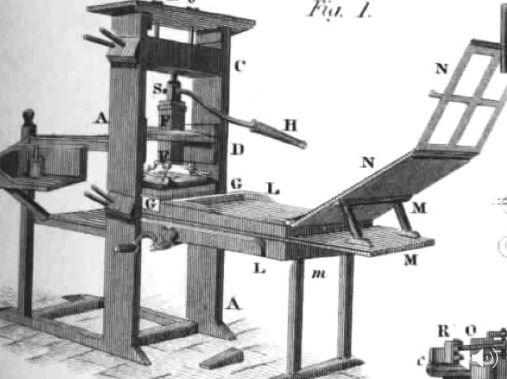

Week 4 Lecture
Early Printing
This week’s lecture focused on the early years of printing. One of the techniques for printing that was used in the olden days was woodblock printing, which was widely used throughout East Asia and originated in China in antiquity as a method of printing on textiles and paper. Johannes Gutenberg was the first person to have introduced printing to Europe with the use of the printing press. Books were also regarded as a luxury at the time and was a highly-sought item. The most popular font during that era was called the Blackletter, which was developed from the Carolingian letterform, due to the mass reproduction of text. However, Blackletter is said to be often associated with German Propaganda. In recent years, the Blackletter’s tradition is trying to be maintained, such as through the Disneyland theme park and the alcohol brand Jägermeister, where they would incorporate the font in the writing.
[Thoughts] I have never noticed how the font Blackletter is still being used until now. It does amaze me how typefaces never “expire” and will exist until the end of time (unless people forget about it). In my opinion, using a typeface does carry around a piece of their history, thus it is not unusual for people to still be implementing old typefaces in design. I wonder what kind of typeface will be popular in the future?
Johannes Gutenberg
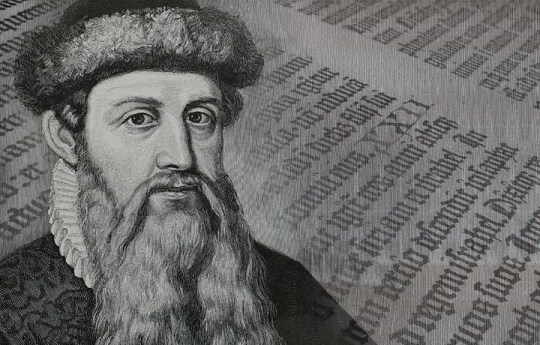
Johannes Gutenberg (Johann Gensfleisch zur Laden zum Gutenberg) was born in the 14th century in Mainz, Germany. He was a craftsman and inventor who originated a method of printing from movable type. There is little recorded history of this early life, but local records indicate he apprenticed as a goldsmith while living in Mainz. He started experimenting with printing in the year 1438. Gutenberg's masterpiece, and the first book ever printed in Europe from movable type, is the “Forty-Two-Line” Bible, completed no later than 1455. The printing press played a key role in the advancement of the Renaissance, the Protestant Reformation, and the Age of Enlightenment. He had afterwards passed away in Mainz in 1468.
Blackletter
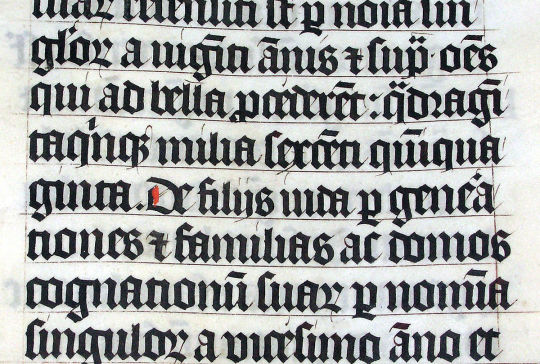
The Blackletter typeface (also sometimes referred to as Gothic, Fraktur or Old English) was used in the Guthenburg Bible, one of the first books printed in Europe. This typeface is recognizable by its dramatic thin and thick strokes as well as the elaborate swirls on the serifs. Blackletter typefaces are based on early manuscript lettering. In the 1500s, Blackletter became less popular for printing in many countries except Germany and the German speaking countries since it was difficult to read the text. In 1933, Hitler declared the new typography to be un-German and declared Fraktur to be “Volk”. The Nazis continued to use Fraktur extensively until 1941 when it was replace with more readable fonts. Blackletter is still used until today but are usually incorporated into headings, logos, posters and signs, for example in The New York Times heading as well as Corona beer labels.
first two images are from the lecture
image 3 https://history-biography.com/johannes-gutenberg/
image 4 https://en.wikipedia.org/wiki/Blackletter
Resources:
https://www.britannica.com/biography/Johannes-Gutenberg
https://www.biography.com/inventor/johannes-gutenberg
https://www.sitepoint.com/the-blackletter-typeface-a-long-and-colored-history/
0 notes
Text
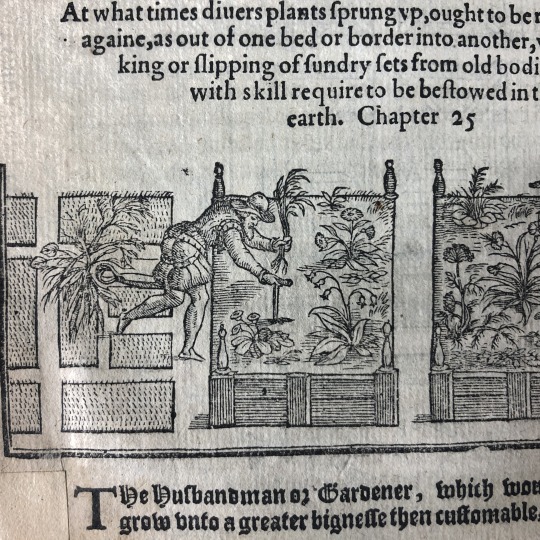
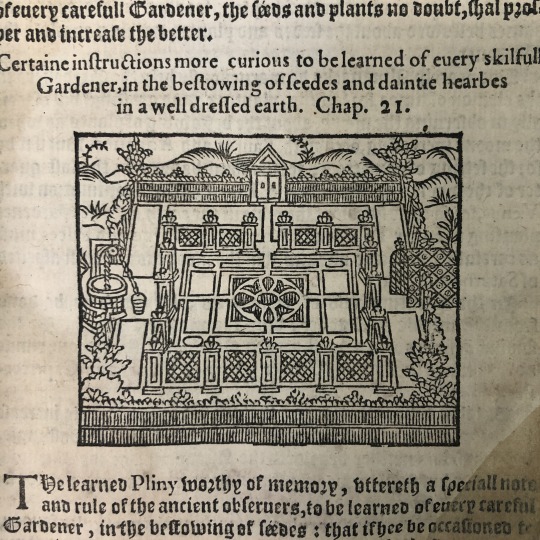

We are celebrating National Garden Week with these wonderful woodcuts from The Gardeners Labyrinth. Originally published in 1577, this popular gardening manual covered everything from seed selection to watering to landscaping, and also included a section on the medicinal and health benefits of some plants.
Thomas Hill. The gardeners labyrinth. London: Henry Ballard, 1608.
#gardening#earlyprinting#woodcuts#woodcutwednesday#plants#herbalmedicine#rarebooks#specialcollections
90 notes
·
View notes
Photo

Quite a rare printed document during the presidency of George Washington. Available #georgewashington #presidential #earlyprinted #elishaperkins #papercollectibles (at Portsmouth, New Hampshire) https://www.instagram.com/p/B60asBNHFt3/?igshid=1e3fbmczp3f59
0 notes
Photo

Twenty-five years ago I wrote these concluding words of an article on 15th century printing technology, the power of biblical and christian symbolism, and man's innate drive towards mammalian herd-mentality: "In the beginning was the word, and the word was printed, and the printed word became god." Sixteen years ago I put the article in a storage box. But the last sentence still rings hauntingly true. #incunabula #earlyprinting #guttenbergbible #lastchancelifecoach #lifecoach #lifecoach #montana #helena #fredcowie
0 notes
Text
New Six Degrees of Francis Bacon Team Member!
We’re delighted to announce that we have a new member of our team!
John Ladd, who’ll be with us full time for calendar year 2017, comes to us from Washington University in St. Louis, where he is a PhD candidate specializing in 17th-century poetry, book history, and the digital humanities. His dissertation work, on social networks and literary collaboration in the early modern period, includes a network analysis project of printed dedications in EEBO-TCP. The questions, tools, and methods for this project couldn’t be a better fit with the goals of Six Degrees. He also comes to us with digital project management experience, having worked on the Spenser Archive, EarlyPrint, and several other projects at WashU’s Humanities Digital Workshop. Coincidentally, John is also a native Pittsburgher, which makes his arrival at CMU something of a homecoming.
John’s main tasks over the next year will be (a.) enriching project data (b.) enhancing user experience (c.) integrating with other digital resources (d.) identifying and partnering with an institutional home for long-term preservation; and (e.) packaging and distributing website code so that scholars can create similar networks for different eras and regions.
In short, he’ll be leading day-to-day programming and data curation activities for the project. The funding for his position comes from a National Endowment for the Humanities Digital Implementation grant awarded in 2016.
John’s excited to get to know the wider Six Degrees community, so feel free to reach out to him by email ([email protected]), on his personal Twitter @johnrladd, or on the Six Degrees Twitter @6Bacon, which he’ll be taking over.
Welcome John!
0 notes
Photo

One of the pretty cool things to fall from the ether recently. 1634, completely unsophisticated, copy of Wood’s, New-England Prospect. Effectively a promotional piece to promote immigration to the New World, it is the earliest detailed account of Massachusetts. #americana #newengland #earlyprinting https://www.instagram.com/p/CjQcdLFr2Mt/?igshid=NGJjMDIxMWI=
0 notes
Text

Here's hoping your weekend is as nice as this fancy gilt and gauffered foreedge!
Behm, Jean. Chronologica Manuductio...Frankfurt am Main, 1619.
97 notes
·
View notes
Photo

Galloping into #spookyseason like...
Raise your scythe if you also just love October.
Woodcut from: Thomas Chamberlain. The minister preaching his own funeral sermon. (Boston, 1790).
#SpookySeason#Halloween#Death#October#WoodcutWednesday#earlyprinting#chapbooks#benslibrary#rarebooks#18thcentury
66 notes
·
View notes
Photo

More cornucopias?!
Just in case you didn't your fill this Thanksgiving here are a couple more, just for good measure. Happy #FinisFriday!
Finispiece from: The vvhole book of Psalmes. London, 1617
6 notes
·
View notes
Photo

Oh, hello incunabula. Fancy meeting you here! An incunable or “fifteener” refers to material printed before 1501.
#libraryshelfie#incunabula#LCPrarebooks#LCPInsider#15thCentury#printedword#earlyprinting#specialcollections#tumblarians
404 notes
·
View notes